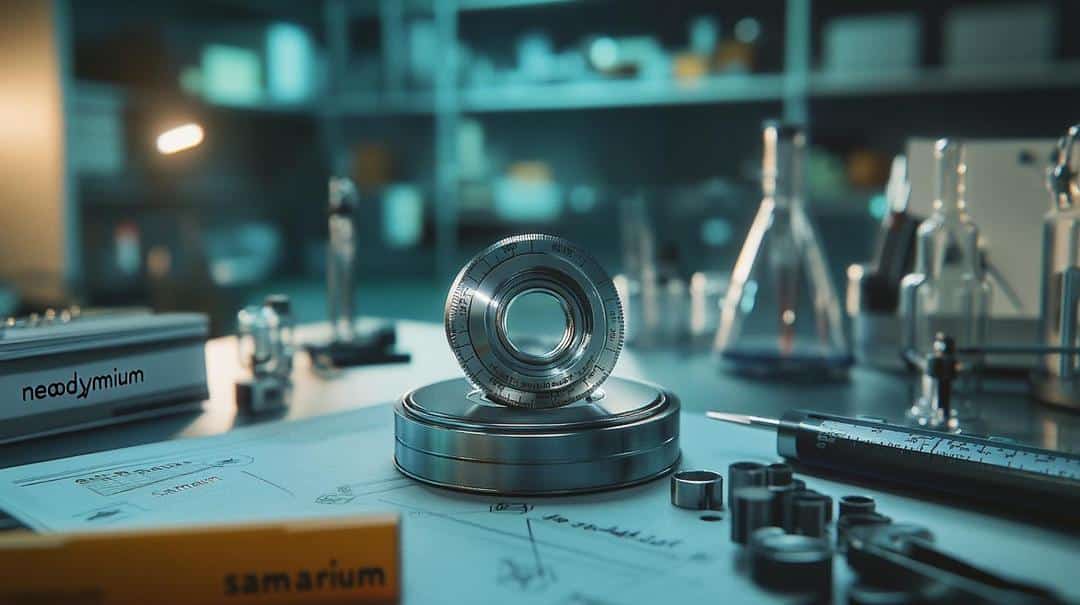Rare earth permanent magnets may sound like one of those things that are too good to be true, but these humble magnetic powerhouses are essential to modern technology! From super-strong motors in electric vehicles to tiny speakers in your earbuds, they’ve got a lot going on beneath the surface. Did you know the magnetic strength of rare earth magnets is so high they can levitate small objects? How does it all work?
Let’s dive in—no physics PhD required!
What's Inside
What Are Rare Earth Permanent Magnets?
Rare earth permanent magnets represent a sophisticated class of magnetic materials distinguished by their exceptional magnetic properties. These magnets are primarily composed of rare earth elements like neodymium, samarium, and dysprosium, which might sound exotic but aren’t actually “rare” in the traditional sense.
Understanding the “Rare” in Rare Earth
The term “rare” relates more to their geological distribution than actual scarcity. These elements are typically dispersed in small quantities across the Earth’s crust, making extraction challenging and concentrated in specific geographic regions.
Unique Characteristics
Unlike traditional magnets, rare earth permanent magnets offer remarkable characteristics:
- Significantly higher magnetic strength
- Exceptional resistance to demagnetization
- Lightweight design
- Compact form factor allows high-performance applications
The Amazing Properties of Rare Earth Magnets
Rare earth magnets stand out due to their extraordinary magnetic capabilities that surpass conventional magnetic materials.
Magnetic Strength and Stability
- Neodymium magnets can generate magnetic fields up to 1.4 tesla
- Maintain magnetic properties across wide temperature ranges
- Resist demagnetization under challenging conditions
Performance Comparison
Compared to ferrite or alnico magnets, rare earth magnets demonstrate:
- 5-10 times stronger magnetic field
- Better performance in smaller physical sizes
- More consistent magnetic output across different environmental conditions
Industrial Applications That Use Rare Earth Magnets
Renewable Energy and Transportation
Rare earth magnets play crucial roles in:
- Electric vehicle propulsion systems
- Wind turbine generators
- Hybrid and electric motor designs
High-Tech and Medical Applications
- Hard drive storage mechanisms
- Smartphone vibration motors
- MRI machine components
- Advanced prosthetic technologies
- Aerospace guidance systems
Everyday Uses That May Surprise You
Consumer Electronics
- Smartphone speakers
- Wireless charging technologies
- Noise-canceling headphones
- Video game controller haptic feedback
Household Innovations
- Kitchen appliance sensors
- Smart home device mechanisms
- Magnetic cabinet closures
- Children’s educational toys with interactive magnetic components
Environmental and Economic Impact of Rare Earth Magnets
Mining and Extraction Challenges
- Significant land transformation during extraction
- Chemical processing generates toxic waste streams
- High water consumption in mining processes
Geopolitical Considerations
- Over 80% of rare earth element production is concentrated in China
- Limited global supply chain diversity
- Increasing geopolitical tensions around resource control
Sustainability Efforts
- Emerging recycling technologies
- Research into alternative extraction methods
- Development of more environmentally friendly processing techniques
The Advantages and Drawbacks of Using Rare Earth Magnets
Key Advantages
- Exceptional energy efficiency
- Compact design possibilities
- Superior performance in precision applications
- Reduced energy consumption in motor technologies
Notable Limitations
- High production costs
- Fragility of certain magnet types
- Geographically constrained supply chains
- Environmental extraction challenges
Are Rare Earth Magnets the Future of Magnet Technology?
Emerging Innovations
- Development of hybrid magnetic technologies
- Research into alternative magnetic materials
- Advances in synthetic rare earth element production
- Exploration of more sustainable extraction methods
Future Trends
- Increased focus on recycling infrastructure
- Government policies supporting sustainable magnet technologies
- Continued investment in research and development
- Expanding applications in robotics and advanced manufacturing
Conclusion
Rare earth permanent magnets may be small, but their impact is anything but tiny. From industrial machines to tiny consumer gadgets, they’re shaping the way we live, work, and produce energy. While challenges like high production costs and environmental concerns continue to be a hurdle, we continue to see innovation improving how we source the materials needed for permanent magnets.
FAQs
What makes rare earth permanent magnets so strong?
Rare earth elements like neodymium and samarium have unique atomic structures that allow for high magnetism even in small volumes, making them incredibly powerful.
Are rare earth permanent magnets really rare?
The term “rare” refers to how these elements are dispersed in the earth’s crust, making extraction difficult. They are technically abundant but geographically concentrated.
How are rare earth magnets made?
They are typically created through a process that involves mining, refining rare earth ores, and then manufacturing the magnet alloys through sintering or bonding techniques.
Can rare earth magnets be recycled?
Yes, rare earth magnets can be recycled, but the process is complex and not yet widely adopted. Research is underway to make recycling more practical and scalable.
Are there alternatives to rare earth magnets?
Scientists are exploring alternatives like improved ferrite magnets, hybrid motors, or using fewer rare earth materials to reduce reliance on limited resources.


Dustin
Driven by a fascination with rare earth elements and their role in powering modern tech and engineering marvels. A true car and tech enthusiast, he loves exploring how these hidden heroes fuel our most exciting innovations.
You Might Also Like…